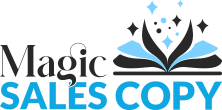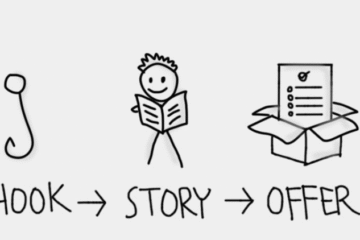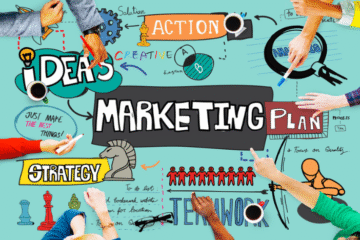Build authority. Lower your CAC. Own the relationship.
Let’s start with a blunt truth most teams whisper but rarely say out loud: you don’t own your audience on social. Algorithms do. One tweak and your reach disappears. Costs rise. Conversions stall. And you’re left paying more and more to rent attention you could have owned outright.
A well-run email newsletter is the antidote. It’s the one channel that compounds trust, response, and revenue—without begging a black box to show your message.
Today, I’ll show you exactly why a newsletter is non-negotiable in 2025—and how to run one that makes buyers lean forward, not glaze over.
The Strategic Big Idea: Rent less. Own more.
Ads and socials are rented traffic. Your newsletter is owned media. When you own the line to your buyer, three profit levers snap into place:
Authority on demand. Publish once, and your credibility multiplies every send.
Predictable response. Email lets you create dependable spikes in traffic, leads, and sales.
Lower CAC, higher LTV. Every additional sale to the same reader gets cheaper. Margins breathe.
That’s the money math the CFO cares about—and the reason smart marketers treat newsletters like a core asset, not a “nice-to-have.”
Why newsletters outperform in 2025 (when everyone’s “doing content”)
Noise is up. Attention is down. But inbox intent is different. People check email to get things done. That micro-commitment—open → scan → act—tilts the table in your favor when your message is sharp.
AI made content easier. Which means mediocrity exploded. The winners are the ones who publish with voice, proof, and a point. Your newsletter is where that voice lives and compounds.
Privacy shifts continue. Tracking gets harder; retargeting gets messier. Email gives you a high-signal, permission-based line to the buyer that doesn’t vanish with a browser update.
Authority & credibility: how a newsletter manufactures trust
Authority is not a logo strip. It’s a pattern of kept promises. Your newsletter proves that pattern in public:
Useful specificity. Quick how-to’s, clear frameworks, named mechanisms. (“Intent-Lift Pages,” “The 9-Touch Profit Arc,” “30-Minute Offer Check.”)
Proprietary POV. Call your shot. Explain what others miss. Put language to problems your market feels but can’t articulate.
Working receipts. Mini case studies, before/after snapshots, numbers with context—not fluff.
Open the black box. Pull back the curtain on your process. Show your thinking, the trade-offs, even the mistakes you fixed.
Do this week after week, and you graduate from “vendor” to trusted advisor—the position that closes deals at premium fees without wrestling over pennies.
What to send: a simple, high-response structure
Think of your newsletter as a well-paced show with recurring segments your readers come to expect. Here’s a template that punches above its weight:
The Hook (60–120 words)
One pain. One promise. One story beat. Make the reader nod in sentence one and click in sentence five.
The Lesson (250–400 words)
A single, actionable idea. Keep the sentences tight. Use examples. End with a one-line takeaway they can try today.
The Proof (100–200 words)
Micro case study, metric change, or a screenshot with a one-line caption. No chest-thumping—just facts.
The Offer Bridge (60–120 words)
Tie the lesson to your service or product. “If X resonated, here’s how we implement it for clients.”
The Call to Action (1–2 lines)
One action. One link. Friction-free.
The PS (optional)
Tease the next issue or add an extra resource. PS lines get read—use them.
Cadence: how often should you send?
Minimum viable cadence: Weekly. Anything less, you’ll lose momentum and forgettable content will creep in.
Growth cadence: 2–3x per week with strong segmentation (buyers vs. subscribers, interests, product lines).
Rule: Never mail just to mail. Mail when you have something sharp, useful, and on-brand. Quality compounds faster than volume.
How to grow your list (without gimmicks)
Lead with a transformation, not a trinket. Offer a 10–15 minute quick-win guide (“Double your demo-show rate in 7 days”), a checklist, or a teardown that solves a painful, valuable problem.
Turn your best posts into evergreen magnets. Package three strongest newsletters into a “Field Guide.” Gate it. Promote it.
Collaborate with non-competing brands. Newsletter swaps work when your audiences overlap and your offers don’t.
Own your “subscribe real estate.” Site header, footer, blog sidebar, post-CTA, and a simple exit-intent. Keep the form dead simple: first name + email.
What to name it (and why it matters)
A strong name promises a specific payoff and gives your audience a badge to wear.
“The 5-Minute Funnel Fix”
“The Growth Room”
“Loyalty & LTV”
“Offer Ops”
Short. Benefit-forward. Easy to remember. Make it something a buyer can recommend in a sentence: “You should subscribe to ___; it shows you how to ___.”
The voice that gets read (and replied to)
Write like you talk after your second coffee—clear, candid, and slightly urgent.
Short sentences. Long ones only when you’ve earned them.
Concrete over abstract. “Lift demo shows 31%” beats “improve engagement.”
Earn the right to sell. Teach first. Then bridge to your offer.
Sound like you. Industry jargon is fine if your buyers use it. If they don’t, kill it.
“But what do we say every week?” 12 months of prompts
A client problem you solved this week—and the 3-step fix.
A teardown of a landing page from your market (what works, what to test).
“The 5 most expensive mistakes we see in ___.”
A named mechanism you use and a quick way readers can try it.
A behind-the-scenes decision: what you almost shipped—and why you didn’t.
“If I had to get results in 72 hours with $500, I’d do this…”
A pricing insight: how one change lifted take-rate.
A before/after narrative with metrics.
A myth you keep hearing—and the data/story that breaks it.
“Office hours” answers to 3 reader questions.
A negotiation lesson that saved margin.
Your quarterly playbook: what you’re testing next and why.
Save these in a living doc. Rotate segments. Readers love rhythm.
Monetization: how your newsletter actually makes money
Direct response: Clear offers inside the newsletter—strategy calls, audits, limited-window promos.
Product ladders: Newsletter → low-friction entry offer (audit, workshop, starter kit) → core service or flagship product.
Sponsorships: Only after you’ve earned consistent opens/clicks. Price on outcomes (clicks/leads), not vanity metrics.
Upsell/expansion: Segment buyers and send personalized use-cases, add-ons, and success paths.
Metrics that matter (and the ones that don’t)
Primary: Click-through rate on core links, reply rate, qualified meetings booked, pipeline generated, revenue attributed.
Secondary: Open rate trends (direction > exact number), list growth velocity, churn by source.
Ignore: One-send hero numbers without context. Chasing opens while ignoring booked revenue is how good teams end up broke.
The 7 deadly sins of weak newsletters (and the quick fixes)
No big idea.
Fix: One clear promise per send. If you can’t summarize it in a single line, it’s not ready.
Topic soup.
Fix: One lesson. One proof. One offer.
Corporate fog.
Fix: Replace abstractions with examples and numbers.
Vanity CTAs.
Fix: One action. Relevant to the lesson. Painless to take.
Inconsistent cadence.
Fix: Pick a day and time. Treat it like a client deadline.
No POV.
Fix: Take a stand. Say what you believe and why.
No feedback loop.
Fix: Ask one specific question each issue. Ship surveys quarterly. Adjust.
A 30-day launch plan (steal this)
Week 1 – Build
Name it. Draft the welcome sequence (3 emails: your story & promise; quick win; how to get the most value).
Create one irresistible lead magnet tied to a painful, valuable outcome.
Design a simple landing page with benefit bullets and social proof.
Week 2 – Seed
Write four foundation issues in advance.
Add subscribe CTAs across your site and to the bottom of your highest-traffic content.
Line up one partner for a cross-promo.
Week 3 – Ship
Send Issue #1. Invite replies with one tight question.
Publish a companion post on your site; link both ways.
Share a short, practical clip on social that tees up the issue and points to the opt-in.
Week 4 – Optimize
Study which link won. Move that element above the fold next issue.
Prune obvious non-engagers who never opened the welcome series.
Draft your first “offer bridge” issue to book strategy calls or trials.
The credibility checklist before you hit send
Is the big idea obvious in the first 2–3 lines?
Does the lesson deliver a concrete, immediate win?
Did you include proof—a screenshot, metric, or mini case?
Is the CTA aligned to the lesson and simple to take?
Would a smart buyer forward this to a colleague? If not, tighten it.
Final word
You can’t control the algorithm. You can control what lands in your buyer’s inbox. A great newsletter is the rare asset that builds authority today and prints permission for tomorrow. It steadies your pipeline, hardens your margins, and makes every other channel work better.
Start now. Name the payoff. Promise one clear win per send. Teach generously. Sell confidently. And watch what happens when your market starts to expect your email—and misses it when it’s late.
Want help standing up a high-response newsletter fast?
Then shoot me a DM or an email: sean@magicsalecopy.pro




